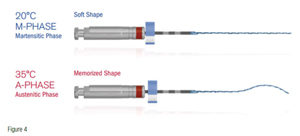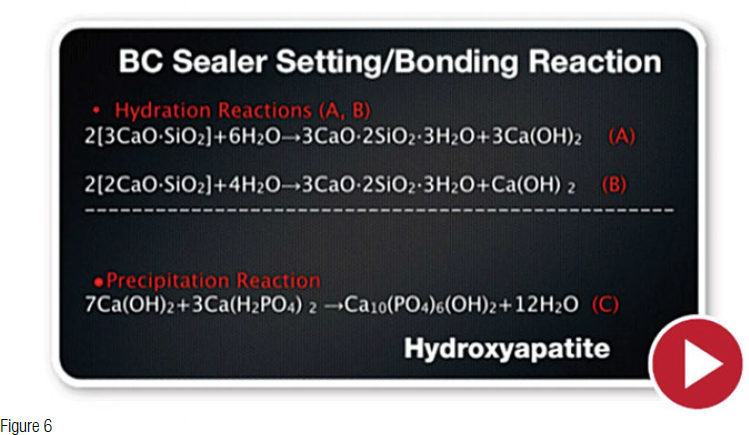
The XP-3D Shaper addresses the shortcomings of traditional NiTi instrumentation and ushers in a new biologic standard of care in endodontic instrumentation. The XP-3D Shaper features MaxWire® NiTi technology, which allows the instrument to expand once introduced to body temperature (Figures 1-2). As it rotates, the instrument’s orbit expands and contracts to abrade the broad and narrow aspects of the canal. This intuitive micro-mechanical debridement allows the practitioner to utilize a single primary shaping instrument to safely clean and enlarge the canal while respecting the original canal morphology.
MaxWire® with Adaptive Core™ Technology
The central core of XP-3D Shaper is a size No. 30 with a 1-degree taper. This small core allows for maximum flexibility and resistance to cyclic fatigue. When introduced to body heat, the Shaper expands its virtual core to 8 degrees. The instrument will collapse (while still providing resistance) under the constraints of the canal. When engaged at 800-1000 RPMs, the Shaper efficiently debrides the root canal walls while respecting the original anatomy. The tip of the Shaper can reach up to size No. 90, but it will not expand the size of the apex unless the canal is naturally smaller than a size No. 30. The adaptive core pulsates in the canal, dislodging dentinal debris and causing significant turbulence (Figure 3).
 The XP-3D Finisher
The XP-3D Finisher
Like the XP-3D Shaper, the XP-3D Finisher utilizes MaxWire technology to adapt to the canal’s natural anatomy. The Finisher has a sickle shape at body temperature and is incredibly flexible. Unlike the XP-3D Shaper, the XP-3D Finisher is intended to clean a prepared canal and will not change the shape of the canal. The Finisher has a larger expansion capacity than the Shaper and can reach upwards of 6mm in diameter. The Finisher has been shown in multiple studies to provide superior final irrigation/cleaning compared to ultrasonics alone. The Finisher is also used extensively for retreatment and for cases with larger abnormal anatomy (internal resorptions, immature teeth). The Finisher is available in size No. 25 and in size No. 30 and has a zero % taper.

Premixed Bioceramic Bonded Obturation
In the era of modern endodontics, shaping is no longer dictated by the limitations of obturation materials. The introduction of non-shrinking bonded obturation (BC Sealer™ and BC Points™) allows practitioners to embrace the new adaptive NiTi instrumentation. Unlike traditional sealers, BC Sealer does not shrink, and it bonds to dentin and BC Points, so it is not necessary to condense gutta percha in an effort to minimize the sealer interface. With BC Sealer, the function of gutta percha is simply to take up space, provide a path for retreatment, and provide for hydraulics/delivery of the sealer (Figure 5).
 BC Sealer Setting/Hydration Reaction
BC Sealer Setting/Hydration Reaction
The calcium silicate picks up water molecules from the dentin and forms calcium hydroxide. The calcium hydroxide combines with the calcium phosphate to form hydroxyapatite (Figure 6).

Visit www.XP-3D.com to learn more about this revolutionary new product. Watch the videos to see the XP-3D Instruments in action, review the research, and schedule a no-obligation demo in the comfort of
your office.
This information was provided by Brasseler USA.


